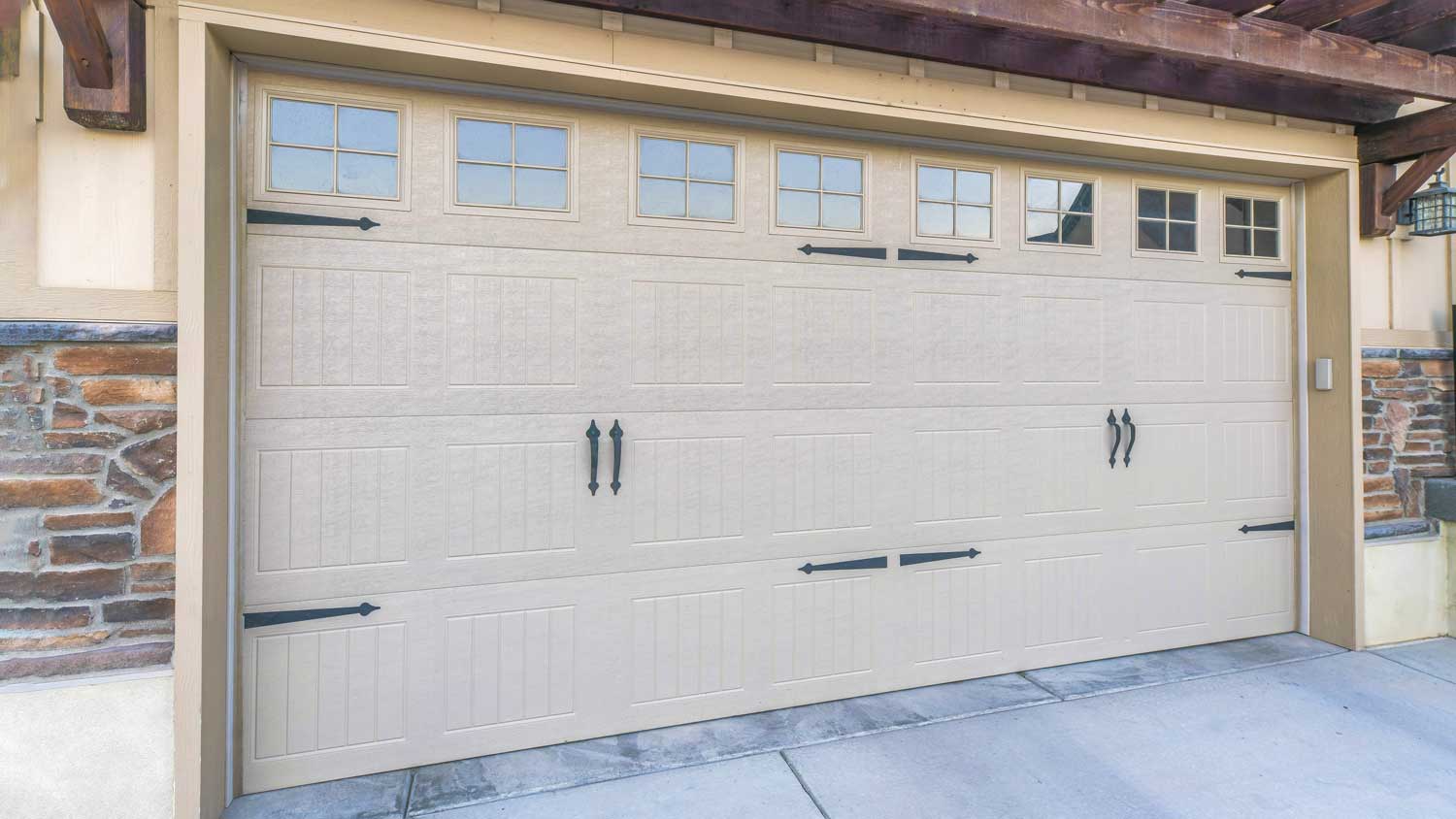How to Replace Your Garage Door Weather Stripping
Your garage is one step away from better energy efficiency


- Measuring tape
- Vice grip pliers
- Utility knife
- Putty knife
- Hammer
- Weather stripping
- Silicone caulk
- Gentle all-purpose household cleaner
- 1.5-inch screws or nails (optional)
- Paintable wood filler (optional)
No one likes when their garage is unusually cold in the winter and hotter than normal in the summer. Weather stripping can wear down and deteriorate in a busy garage, leading to a poorly insulated garage door and higher electric bills. Fortunately, replacing weather stripping in a garage is an easy way to increase energy savings. This guide will show you the ropes on how to replace weather stripping on your garage door for a more energy-efficient home.
When dealing with heavy garage doors, it's crucial to regularly check and maintain the lifting mechanisms for safe and smooth operation.
Prepping to Replace Garage Door Weather Stripping
When it comes to preparing for a garage door weather stripping replacement, the most important things to consider are choosing the right weather stripping material and your safety. For the longest-lasting weather stripping project, choose a nail-on V-strip material. This material won’t slide off or move thanks to the nail-on installation.
And remember, garage doors are heavy and the spring mechanism can result in serious injuries or even fatalities if you are not careful. Always unplug your garage door opener, clamp the door on both sides to the track using vice grips, and pull the release to put your garage door into manual mode.
Measure the Garage Door
 Photo: brizmaker / Adobe Stock
Photo: brizmaker / Adobe StockMeasuring your garage door correctly is the key to having weather stripping that fits. If you measure too short, you’ll have spent time installing weather stripping that won’t make it across the entirety of your garage door—measure too long, and you might need to trim some of the material off.
To save yourself multiple trips to the hardware store, measure your garage door using a measuring tape, and double-check your measurements. Be sure to measure the length, width, and height of your garage door, as you'll need all of these measurements for the proper fit.
Remove the Existing Weather Stripping
Removing your garage door's existing weather stripping can be a quick and easy job—or it can be a time-consuming one depending on its condition. To take off the old weather stripping material, raise your garage door high enough to access the bottom of the door. Then, peel the old weather-stripping material off by starting in one corner.
Adhesive weather stripping is relatively simple to remove, as all you need to do is pull the material off. However, you may find that some of the old adhesive does not come off as easily from the door. You may need to use a putty knife to gently scrape the adhesive off the door.
If your garage’s weather stripping is held in place with nails or screws, you will need to use a pry bar and a hammer to carefully pry the old weather stripping off the garage door.
Clean the Track and Door Frame
Cleaning your track and the door frame where you’re applying new weather stripping is an important step that you don't want to overlook. Having a clean track and frame allows for adhesives and new weather stripping to press firmly to the garage door without debris, rust, or other obstacles getting in the way and shortening the lifespan of y our hard work.
Use a gentle cloth or sponge and an all-purpose cleaner to wipe away rust, grease, and debris. You may need to take out your putty knife again and carefully scrape away at any old caulk, rust, or glue. Let your freshly cleaned track and door edges dry completely before moving on to the next step.
Fill in Old Weather Stripping Holes (Optional)
If your old garage door weather stripping used nails or screws to fasten onto a wood casing, then you might want to fill the holes so that there aren't noticeable holes when you install the new weather stripping. Use a putty knife to smoothly apply a paintable wood filler and cover the holes.
Cut the New Weather Stripping to Size
With your previous measurements on hand, your measuring tape, and your utility knife, now is the time to start cutting the new weather stripping material for your garage door to size. Do the two sides at the same time, then do the top and bottoms together, as not all measurements will be the same.
Install the New Weather Stripping
 Photo: Oleksandr / Adobe Stock
Photo: Oleksandr / Adobe StockTo nail the new weather stripping into your garage, you'll want to place the weather stripping material on your door, starting from the top and working your way down. Depending on the type of weather stripping material you choose, you can either press the adhesive firmly onto the door or screw or nail the weather stripping to the door's casing.
Follow the manufacturer’s instructions for installing your weather stripping. Most weather stripping that requires nails or screws typically has a spacing somewhere between 8 and 18 inches apart.
Some weather stripping comes with pre-drilled holes for you to insert the nails and secure to the casing. Your weatherstripping should come with the required supplies, but if you lose or run out of nails or screws, you can purchase moisture-resistant, 1.5-inch replacement nails or screws.
Apply Caulk as Necessary
After installing the new weather stripping, visually inspect the perimeters of your garage door and use silicone caulk to seal any remaining small gaps, cracks, or holes around the frame of your garage door.
DIY Replacing Your Garage Door’s Weather Stripping vs. Hiring a Pro
Replacing a garage door’s weather stripping yourself is a relatively simple project that an avid DIYer can tackle with confidence. However, if you find that your garage door’s frame or door shows signs of rotting or deterioration as you remove the old weather stripping, then you might want to contact a local garage door installer to repair or replace your garage door before you install new weather stripping.
Frequently Asked Questions
Garage door weather stripping can last up to 30 years, but if you frequently use your garage door, it's better to replace weather stripping anywhere from five to 10 years. If you don't correctly install weather stripping, then your weather stripping could last for a much shorter period of time—like only a handful of months.
To be on top of replacing your garage door’s weather stripping, inspect the weather stripping every one or two years and look for the following signs that it's time to replace your weather stripping:
Light shines through the weather stripping seal.
You see deterioration or damage to the weather stripping.
The weather stripping has peeled away from the door frame.















